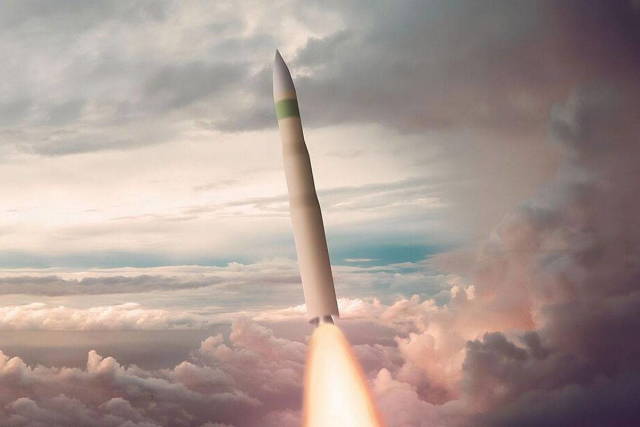According to foreign sources, the new nuclear ballistic missile of the US Air Force intercontinental range has received the official designation "Sentinel" (Northrop Grumman LGM-35A Sentinel). Secretary of the Air Force Frank Kendall approved this name for the system that is to modernize the intercontinental ballistic missiles (ICBMs) of the US nuclear triad.
The US Air Force concluded that the Sentinel would ensure the continuity of strategic deterrence, and its cost would be less than the cost of extending the service life of the current arsenal of American ICBMs from the aging Boeing Minuteman III. The replacement of missiles manufactured in the 1970s will modernize the land part of the nuclear triad and put an end to the more than 50-year service life of the Minuteman III.
"This year, the Air Force is celebrating its 75th anniversary, and the Minuteman III weapon system has been and will remain an integral part of our country's defense. In the next 75 years, investments in nuclear modernization are more important than ever, and we are committed to the transition to the Sentinel, which will ensure our country's readiness for tomorrow's strategic deterrence," said the Chief of Staff of the US Air Force, General C. Q. Brown Jr. (CQ Brown, Jr.).
As part of the Ground-Based Strategic Deterrent (GBSD) program, the US Air Force Command selected Northrop Grumman Corporation in September 2020 to begin the design and production phase (EMD) at a cost of $13.3 billion. As representatives of the Air Force Nuclear Weapons Center announced, the work will last 8.5 years and will include the development of a weapons system, its qualification, testing and evaluation, as well as nuclear certification. After the successful completion of the EMD phase, the Northrop Grumman team plans to begin production and delivery of an advanced and fully integrated weapons system in order to meet the Air Force schedule for achieving primary operational readiness by 2029.
Entering the EMD stage followed a three-year Technology improvement and Risk Reduction (TMRR) phase in the GBSD competition. Using digital engineering methods, the Northrop Grumman team completed all stages of design verification on time and within budget. Work under the GBSD program is planned to be carried out at Northrop Grumman facilities in Roy and Promontory (Utah), as well as at other key Northrop Grumman facilities in the USA, in particular: Huntsville and Montgomery (Alabama), Colorado Springs (Colorado), Bellevue (Nebraska), San Diego and Woodland Hills (California), Chandler (Arizona), Annapolis Junction (Maryland).
Aerojet Rocketdyne, Bechtel, Clark Construction, Collins Aerospace, General Dynamics, HDT Global, Honeywell, Kratos Defense and Security Solutions, L3Harris, Lockheed Martin, Textron Systems, as well as hundreds of other small and medium-sized companies of the US defense, engineering and construction industries will work in cooperation with Northrop Grumman.
According to the materials of the resource flugrevue.de

